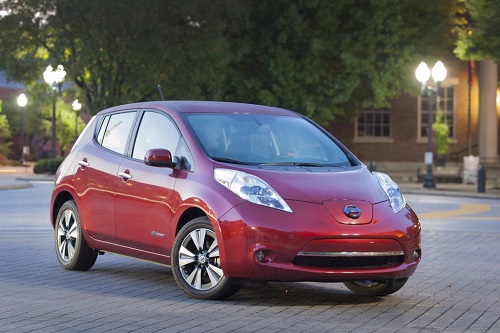
Why are electric cars making a comeback?
Despite consumer concerns about driving ranges, recharge times, and the price of plug-in electric vehicles (EVs), monthly sales are up for many models, including the Nissan Leaf, currently the best-selling EV in the world, with approximately 9,000 electric cars sold in March 2014, compared to the 6,900 sold in February.
Electric cars provide a quick, powerful, smooth ride with no exhaust, no engine noise, and no need for costly fill-ups. In fact, according to a recent report by the Union of Concerned Scientists (UCS), EV drivers can expect to save $750 to $1,200 annually, compared to the cost of fueling a new, compact gas-powered vehicle at $3.50 a gallon. In addition to saving money, driving an EV reduces the amount of carbon emissions contributing to global warming.
Back in his 2011 State of the Union address, President Obama announced plans to have a million plug-in cars on U.S. roads by 2015. As gas prices continue to rise, more and more manufacturers are exploring electric and hybrid options, and consumers are warming up to the idea of driving a car powered by electricity.
How do they work?
It may surprise you to know that most cars on the road at the turn of the twentieth century were actually electric. By the 1920s, cars built with an internal combustion engine fueled by gasoline had overtaken them in sales and popularity. In the late 1960s, in response to the oil crisis and a growing awareness of the dangers of emissions, companies began to manufacture electric cars again for a small, but growing, market.
Instead of an internal combustion engine, electric cars have an electric motor powered by energy from rechargeable batteries. Batteries can be recharged anywhere there is a 240-volt outlet. To recharge, EV drivers literally plug their car into the power grid. (Nissan LEAF has its own charging station that can be installed in your home.) The distance these vehicles will travel on one charge depends on the size of the batteries, the make and model the batteries are powering, road conditions, and the driving habits of whoever is behind the wheel. Most EVs today can drive 100 to 200 miles on a fully-charged battery.
Electric cars run completely on electricity and can only travel as far as a charge will allow. Hybrid cars are powered by a combination of electricity and gas, which extend the driving range and still support energy efficiency.

Dillon’s can repair electric vehicles
At Dillon’s Automotive, our fully certified ASE trained professionals will take the time to diagnose and repair any issues with your electric or hybrid vehicle. Located in Katy, our facility features state-of-the-art equipment and products to provide you with the best in vehicle maintenance and repair. Visit our website to submit an estimate request or stop by in person to find out more about our services.
